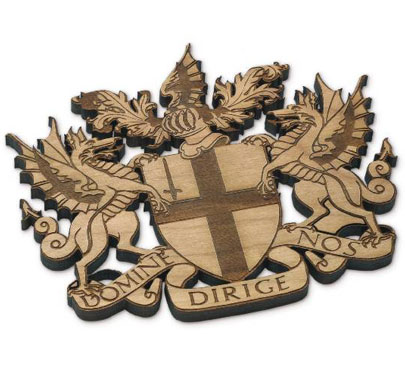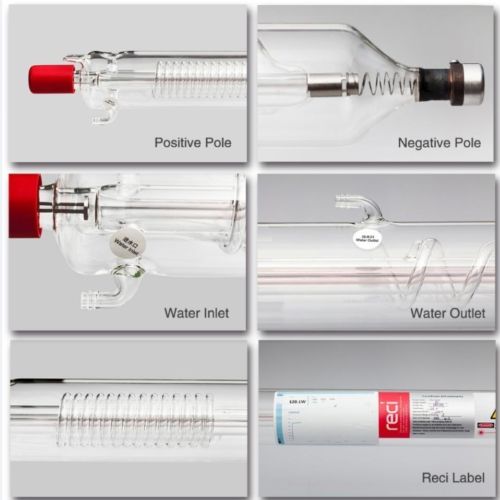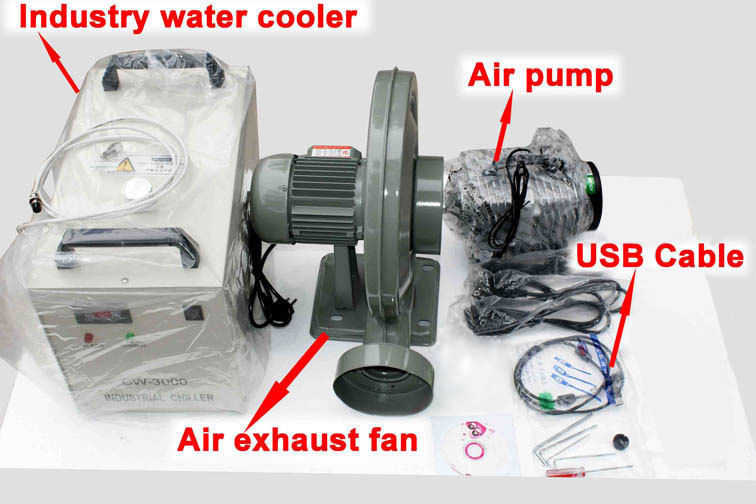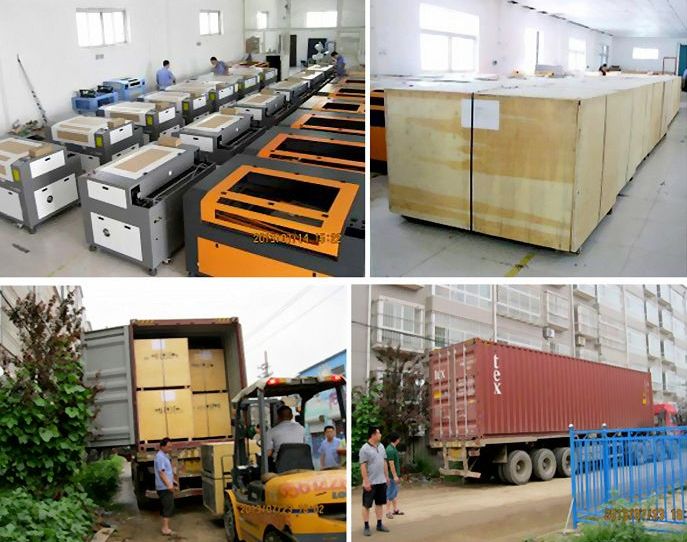(1) General provisions
1. When transporting blasting equipment outside the enterprise, the Regulations of the People's Republic of China on the Administration of Civil and Explosives shall be observed.
2. When the blasting equipment arrives at the railway station or the terminal, the leader of the unit shall assign a special person to collect it.
When receiving blasting equipment, the packaging, quantity and quality of the blasting equipment should be carefully checked. If the packaging is damaged and the quantity and quality are not in conformity, it should immediately report to the higher authorities and the local county (city) public security bureau, and according to the regulations of the transportation department, The relevant representatives will participate in the preparation of the report and distribute it to the relevant departments.
3. It is forbidden to transport blasting equipment with dump trucks, dump trucks, trailers, tractors, motor tricycles, manpower tricycles, bicycles and motorcycles.
4. When loading and unloading blasting equipment, the following regulations must be observed:
(1) There should be someone in charge to supervise;
(2) Guards should be set up to prohibit the presence of unrelated persons;
(3) It is forbidden to mix blasting equipment with other goods;
(4) Carefully check the integrity of the means of transport and remove all debris from the means of transport;
(5) It is strictly forbidden to rub, impact or throw blasting equipment;
(6) The shipment of nitroglycerin explosives or detonators shall not exceed two-thirds of the rated load of the transport; the shipment of other explosive equipment shall not exceed the rated load of the transport;
(7) The loading height of the blasting equipment shall not exceed the edge of the carriage, and the loading height of the detonator and nitroglycerin explosive shall not exceed the second floor;
(8) When loading blasting equipment in layers, it is not allowed to stand on the lower box (bag) to install a layer;
(9) When loading and unloading blasting equipment with a crane, the weight of one lifting shall not exceed 50% of the capacity of the equipment;
(10) It is forbidden to load and unload blasting equipment in the event of thunderstorms or storms;
(11) The loading and unloading work of blasting equipment should be carried out during the day.
5. The location of loading and unloading blasting equipment should have obvious signals: red flags and warning signs should be hoisted during the day; sufficient lighting should be provided at night and red lights should be hoisted.
6, when the blasting equipment shipped from the factory or the pool to the sub-libraries, boxes (bags) and lead seal must be intact.
7. When transporting two or more kinds of blasting equipment with the same vehicle (ship), the requirements of Table 14 shall be observed.
8. Under special circumstances, with the approval of the blasting work leader, the detonating equipment and explosives may be shipped in the same warehouse or ship, but the quantity shall not exceed 1000kg of explosives, 1000 detonators, 2000m of detonating cords, and 2000m of fuses.
The detonator must be installed in a special safe, the inner wall of the box should be lined with a cushion, and the box should be fastened to the front of the vehicle. The explosive phase (bag) should not be placed on the detonator.
9. The gap in the detonator box (box) is filled with a flexible material such as foam.
10. Fireworks and carrying fire items are strictly prohibited when loading and unloading and transporting blasting equipment.
11. Vehicles (ships) equipped with blasting equipment must comply with the following regulations while driving:
(1) There are escorts;
(2) Driving on the designated road (aviation) line;
(3) It is not allowed to stay in places with lots of people, intersections and bridges (below);
(4) The car (ship) is covered with canvas and has obvious signs;
(5) Non-custodial personnel are not allowed to ride;
(6) When the temperature is lower than 10 °C, it is easy to freeze the nitrated sweetener or the temperature is lower than minus 15 °C.
(7) When transporting high-sensitivity blasting equipment such as nitroglycerin explosives or detonators, the bottom of the compartment and the cabin should be cushioned.
(B) railway and waterway transport
1. Railway transportation blasting equipment must comply with the following regulations:
(1) Cars equipped with blasting equipment are strictly prohibited from slipping;
(2) The parking line of the carriage containing the blasting equipment shall be separated from the other lines; the retractor to the line shall be locked; the vehicle shall be wedged; the danger sign shall be placed 50m before and after;
(3) Between the carriage containing the blasting equipment and the locomotive, the compartment between the explosive compartment and the detonator compartment is not separated by the compartment without blasting equipment;
(4) The speed of vehicle operation, the mining area does not exceed 30km/h, and the factory does not exceed 15km/h.
2. Water transportation blasting equipment must comply with the following regulations:
(1) It must be suspended in the event of heavy fog or heavy winds;
(2) The parking place is not less than 250m from the shore building;
(3) Hazard signs are set at the bow and stern, and red safety lights are provided at night and in fog;
(4) A sufficient number of fire-fighting equipment is available on board;
(5) It is forbidden to transport explosive equipment with sputum.
3. Motor boats transporting blasting equipment shall meet the following conditions:
(1) There shall be no power supply in the cabin of the blasting equipment;
(2) There shall be no gap between the bottom plate and the bulkhead, and the hatch shall be closed;
(3) Insulation measures shall be taken for the cabin partition adjacent to the gun cabin;
(4) Reliable insulation of the steam pipe.
1. To transport explosive equipment by car, the following regulations must be observed:
(2) Driving by a driver who is familiar with the nature of blasting equipment and has safe driving experience;
(3) Speed ​​of the car: no more than 40km/h when the visibility is good; halving the speed when the visibility is low, such as dust, fog, snowstorm;
(4) When driving on a flat road, the distance between the two cars is not less than 50m; when going up or down the mountain is not less than 300m;
(5) In the event of a thunderstorm, the vehicle should be parked away from the open space of the building;
(6) In winter transportation in cold areas, anti-skid measures must be taken.
2. To transport explosive equipment with animal vehicles, the following regulations must be observed:
(1) use trained animals;
(2) Vehicles shall be equipped with brakes, and vehicles carrying nitroglycerin explosives or detonators shall have anti-vibration devices;
(3) The loading capacity of blasting equipment does not exceed half of the normal load;
(4) When transporting on a flat road, the distance between the two animal vehicles is not less than 20m; not less than 100m when going up or down the mountain;
(5) The blasting equipment on the vehicle should be tied up.
(4) Transporting blasting equipment to the blasting site
1. Transporting blasting equipment in shafts and inclined shafts must comply with the following regulations:
(1) notify the driver and the signal worker in advance;
(2) When using a cage to transport detonators or nitroglycerin explosives, the lifting speed shall not exceed 2 m/s; when transporting blasting equipment with buckets or slopes, the speed shall not exceed 1 m/s; when transporting electric detonators, insulation shall be adopted. Measure
(3) It is forbidden to transport blasting equipment during the time of going to work, off work or concentration of personnel;
(4) Except for blasting personnel and signal workers, other personnel shall not ride with the tank;
(5) Transporting ammonium nitrate explosives in cages, the loading height does not exceed the edge of the carriage; transporting nitrates than glycerin explosives or detonators, no more than two layers, the layers of which must be cushioned;
(6) It is forbidden to stop the blasting equipment in the wellhead room or the bottom hole yard.
2. The use of electric vehicles to transport blasting equipment must comply with the following regulations:
(1) “Danger†sign before and after the train;
(2) Transporting detonators and explosives in closed special-purpose compartments, which should be cushioned and the running speed should not exceed 2m/s;
(3) Separating the carriage of the blasting equipment from the locomotive or the detonator's compartment with the carriage of other blasting equipment in a compartment without blasting equipment;
(4) When transporting electric detonators, reliable insulation measures should be taken;
(5) Transportation by wire-type electric motor vehicle. When loading and unloading blasting equipment, the locomotive must be powered off.
3. The following regulations must be observed when transporting blasting equipment for vehicles on slopes:
(1) The driving speed does not exceed 10km/h;
(2) It is forbidden to transport when going to work, off work or concentration of people;
(3) A special red battery should be installed on the front and rear of the vehicle as a danger sign;
(4) It should be driven in the middle of the roadway, and the car should be allowed to park.
4. Manual handling of blasting equipment must comply with the following regulations:
(1) Carrying a good mining battery light with you at night or downhole;
(2) Explosives and detonators shall be placed in two special backpacks (wooden boxes), and shall not be placed in the pockets;
(3) After receiving the blasting equipment, it should be sent directly to the blasting site to prohibit littering;
(4) No blasting equipment shall be received in advance, and blasting equipment shall not be carried in places where people gather;
(5) The number of blasting equipment delivered by one person at a time shall not exceed:
Simultaneous handling of explosives and detonating equipment 10kg
Unpacking (bag) transporting explosives 20kg
Carrying a box of original explosives (bags)
Pick up two boxes of original packaging explosives (bags)
   2. Inspection and destruction of blasting equipment
(1) Inspection of blasting equipment
1. The new warehousing equipment should be sampled for performance inspection. For blasting equipment that exceeds the storage period, the date of manufacture, and the quality of the blasting equipment, strict inspection must be carried out to determine whether it can be used.
2. The inspection of blasting equipment shall be carried out by the warehouse clerk and the tester.
3. The explosion performance test of blasting equipment should be carried out in a safe place.
(2) General provisions for the destruction of blasting equipment
1. Explosive equipment that has been inspected and confirmed to be ineffective and does not meet the technical requirements or national standards shall be destroyed.
2. When destroying blasting equipment, you must register and prepare a written report. The report shall state the name, quantity, cause of destruction, method of destruction, location and time of destruction of the destroyed blasting equipment, and report to the higher authorities for approval. The report is distributed in five copies and distributed to the superior department, the chief engineer or the blasting work leader, the unit security department, the blasting equipment library and the local county (city) public security bureau.
Destruction work shall be carried out in accordance with the written instructions of the chief engineer of the unit or the leader of the blasting work.
3. Destroy the blasting equipment and permit the use of the explosion method, the incineration method and the dissolution method.
4. The destruction of blasting equipment by explosive or incineration must remove flammable materials, weeds and gravel around the destruction site.
5. When destroying blasting equipment by explosion method and incineration method, there should be a strong shelter. The distance from the shelter to the destruction site of the blasting equipment is determined by the design.
In the absence of artificial or natural shelters, the explosive equipment shall be destroyed by explosive method and incineration method. Before detonation or after ignition, the personnel participating in the destruction shall be away from the danger zone, and the distance shall be determined by design.
6. It is forbidden to destroy blasting equipment in the weather at night, rain, fog and above three winds.
7. The remaining packaging materials (boxes, bags, boxes and papers) that cannot be used continue to be inspected and confirmed to be destroyed by incineration when there is no detonator or residue.
The medicine box (bag, box) containing the traces of oil leakage from the nitroglycerin explosives should be destroyed.
8. After destroying the blasting equipment, the site should be carefully inspected. If any residual blasting equipment is found, it must be collected and destroyed.
(3) Methods for destroying blasting equipment.
1. Explosive destruction is permitted only when it is confirmed that the detonator, detonating cord, the blast tube, the primer, the perforating bullet, the explosive cartridge and the explosive can completely explode.
2. The blasting equipment allowed to be destroyed by the explosion method shall not exceed 20 kg. The location of the destruction is determined on a case-by-case basis.
3. If all the blasting equipment to be destroyed is transported to the destruction site once and destroyed in batches, the blasting equipment to be destroyed shall be placed behind the sheltering body on the wind direction of the destruction site, and the distance shall be determined by design.
4. Destroy the blasting equipment by the explosion method, and the electric detonator, detonating cord or detonating tube should be used to detonate. In special cases, fire detonators can be used to detonate. The fuse must be of sufficient length to ensure that all personnel engaged in the destruction work can be evacuated to a safe location. The fuse should be laid from the downwind to the location of the destruction and should be straightened to cover the sand to avoid curling. The detonator and the squib should be buried in the soil and destroyed after I installed it.
5. Demolition of explosive cylinders, perforating bullets, primers and explosive cartridges with explosion hazard shall be carried out only in pits (or waste roadways) with a depth of more than 2 m and shall be covered with a layer of loose soil.
6. Detonation kits for destroying blasting equipment must be made of good quality blasting equipment.
7. Destroy explosives with poor detonation performance, which can be detonated by increasing the detonation energy.
8. Explosive blasting equipment that will not cause explosion can be destroyed by incineration method. Before incineration, it must be inspected in detail to prevent mixing of detonators and other detonating materials.
9. The blasting equipment to be incinerated should be placed on the fuel pile, and the blasting equipment allowed to burn in each fuel pile should not exceed 10kg. The medicine rolls should be arranged in rows on the fuel pile and should not touch each other.
Smoke or smokeless gunpowder to be incinerated should be scattered in strips. The thickness shall not be greater than 10cm, the distance between the strips shall not be less than 5m, and the width of each strip shall not be greater than 30cm. At the same time, the number of lights shall not exceed three.
When burning gunpowder, it is necessary to prevent static electricity and electric shock from causing the burning of gunpowder.
10. It is forbidden to burn the blasting equipment in a container.
11. Before ignition, the fuse and the igniting material should be laid from the downwind direction. Only after all the preparatory work is completed and all the staff members enter the safe area, the ignition is allowed.
12. The fuel pile should have sufficient combustion and no fuel should be added during the incineration process.
13. Only after confirming that the fuel reactor has been completely extinguished, will it be allowed to enter the incineration site for inspection. After the incineration site is completely cooled, it is only necessary to start burning the next batch of explosive equipment.
14. Ammonium nitrate explosives and black powder that are not resistant to water can be destroyed by dissolution.
It is allowed to dissolve and destroy the blasting equipment in the container. Residues that are not bathed should be collected and destroyed by incineration or explosion.
Overview of the UTECH CO2 Laser Cutter
Product Description:
CO2 Laser Engraver is special for some vertical materials, it mainly used in the vertical tomb industry, this machine can be fixed onto the tomb for some engraving work, also can do some normal cutting and engraving work.Applicable materials:
Rubber, Marble, granite, jeans, fabric, acrylic, MDF, wood, bamboo, organic glass, crystal, plastic, garments, paper, leather, rubber, ceramic, glass and other non-metal materials, etc.
Applicable industries:
Advertisement, gift, shoes, toys, computers, garments, model cutting, building, packaging, paper industry, etc.



Advantages of UTECH Laser Cutting Machine:
1. Ball screw transmission
Compared with belt transmission , high precision with fast speed.
2. Stepper motor and river
Standard machine equipped with stepper motor and driver, also can choose hybrid or other servo motor and driver.
3. Ruida 6332M control system Controller
1) Original new version Ruida 6332M control system, support DSP control.
2) High speed USB data transmission interface, download speed is up to 500kb/s
3) The control panel has 12 language for optional,such as Chinese,English,French, Portuguese, Spanish, Russian, German, Korean,Japanese and so on.
4) It supports multiple graphic formats, such as PLT / DXF / BMP / JPG / GIF / PGN / TIF and so on.
5) This machine is equipped with Control System for CorelDraw/AutoCAD and other advance software.
6) Very easy-operating control board and you can also see the engraving path from the control board.
4. Professional Laser headJust one year time,we have improve the laser head three times ,many factory is still use the first
or second one.
At present the latest generation is the most perfect of laser head, compared to the previous two generations, it has many advantages ,such as higher precision, better stability,more convenient to adjust.
And it is also the most popular design for customers.
5. Co2 Laser Tube ( Original Reci laser tube , Best brand in china )
Using life :8000-10000 hours
Global Warranty 12 months
6. Bracket of co2 laser tube
We not only use the best brand laser tube, in order to make the laser tube to play the best results ,for the auxiliary components ,we have also made constantly improvements, such as laser tube bracket, lens bracket, etc.
7. Laser supplier matched with the laser tube
Laser power supplier installed Independent , compared with the general install together with other Electrical Equipment, it can reduce interference of other
Electrical Equipment this can ensure the better performance of the laser power.
8. 550W exhaust fan
9. Water pump or Water chiller CW3000/5000/5200
To Cool Laser tube and Longer the lifetime of Laser tube.
Supporting upgradation to CW6000 with extra payment.


Package:
Every machine is packed with great care and tough material.
It is packed with cling films first and then film bags.
At last, it is packed with wooden case which is reinforced with the iron bar on the top and bottom.
With this kind machine, all our Laser Machine can protect well during long trip by sea or by train.
We can transport machine by boat or by training, according to your requirement.

<
Model
UTECH Laser cutting machine
Working area
1300*900mm/1300mmx2500mm, etc
Laser Types
Seal CO2 LaserTube
Laser power
130W/150W/180W/260W
Engraving speed
100-600mm/s
Cutting speed
0-30mm/s
Location precision
≤0.01mm
Resetting positioning accuracy
0.01mm
Power supply
AC110- 220V/50-60HZ
Controlling software
RDCAM
Operating temperature
0 - 45°
Operating humidity
5-95%
Minimum shaping character
English 1 x 1mm
360°slope engrave
Yes
Driving system
Stepper
Cooling mode
Water-cooling and protection system
Auxiliary Devices
Exhauster and the Exhaust Pipe
Software
RDCAM V6.0
Graphic format supported
BMP, CIF, JPEG, TGA, TIFF, PLT, AI, DXF, DWG,etc
Optional
Atuomatic feeding system, rotary axis, auto-focus
Laser Cutting Machine
Laser Cutting Machine,Laser Cutter,Mini Laser Cutting Machine,Co2 Laser Cutting Machine
Shandong U-May CNC Technology Co., Ltd. , https://www.sesamecnc.com